How to get ahead of the ecommerce competition by keyword research, referral marketing, competitor analysis and viral marketing
In this post, we'll outline 4 marketing growth hacks to help ecommerce business, the tools to achieve this and how to use them.
1. Keyword Research
Knowing better keywords to target is one way to achieve growth successfully. When you run keyword research there are a lot of words that’ll show up on the results, but not all of them will be a good choice for your niche, so you have to aim for the right one. Having the right keywords in your SEO strategy will give you better content and a high(er) chance to rank in search. Targeting the keywords your potential audience use to find you and your content will make you easier to find. But take note that that is not enough to rank, in other SERPs there are chances wherein unless you use a specific phrase that includes your keyword, you wouldn’t rank at all. Search engines make sure that they show quality articles on their search results and that includes organic keywords, which means if you keyword stuff it won’t bring you anywhere. Look for topics relating to your website to talk/craft conversation about making sure the keywords you use in it would be relevant to your whole website.
Type of keywords:
There are different ways to use a keyword, to ask a question, give a description, or as a word relating to what you’re looking for. Your customers would find different words relating to their aim to find what they need.
By Keyword length- The head, the body, and the long tail
- The Head - It isn’t specific but it gets a lot of traffic. It’s more of a descriptive word that customers use. And even if it produces a large traffic it seldom converts. It’s just like when you type in “Shoes” in the search bar.
- The Body - This gives more detail to the head but it still stays as a generic one. Something that would look like “School Shoes” in the search bar, it’s more specific but it will still lead you to more choices of different variants.
- Long Tail - This one is the most detailed form that will lead your customers to what they need. It would be something like “Black Flat School Shoes for Elementary Girls”.
By Buying intent- Used for customers that are aiming to buy
- Informational - Informational keywords are more of the how’s, where’s and when’s. Keywords that would give you more information about something.
- Navigational - This one is informational too but more relating to contact details and exact location. Customers would usually use the company name and location or the brand name and location.
- Commercial - Customers use these types of keywords to find a better choice or to compare. An example would be Best iPhone 6 Color for Men.
- Transactional - These are the best ones, people who use these are usually aiming to purchase and the keywords usually used here are 'buy', 'order' and others that go on the same way.
Let’s use SEMrush for keyword research
Now before you begin, you should already have an idea of what words would best describe your website and its content. List all of them and if you can rank the most important ones.
First stop is the login page to your SEMrush account.
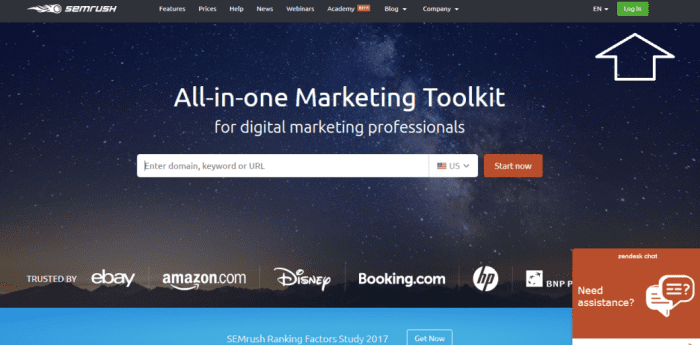
The moment you log-in you see your dashboard.
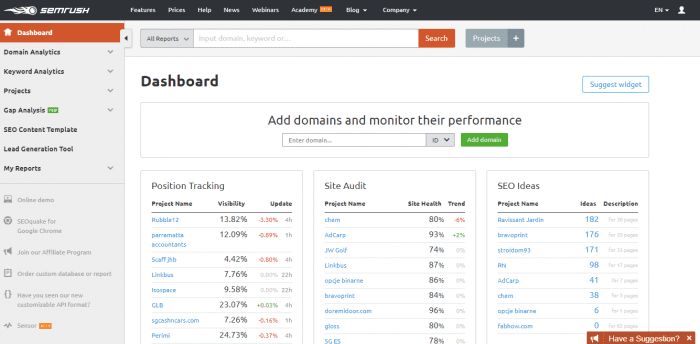
On the left part of your screen click on overview then as it shows the drop down click on overview.
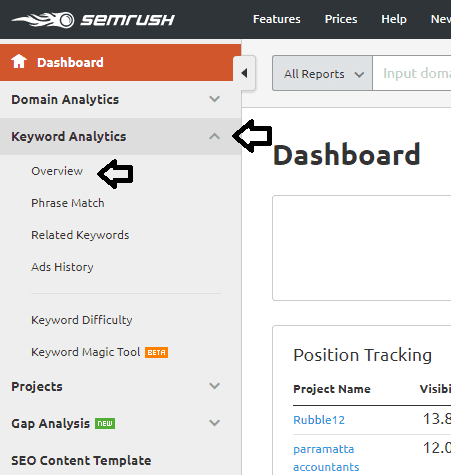
Earlier I asked you to list words that would be relevant to your website, this is when it comes to use.
Back to SEMrush you type in one of the words you listed.

For this example, I used the word shoes. So once you click on search you get a result with an overview of data that is significant to the word you typed in the search bar.
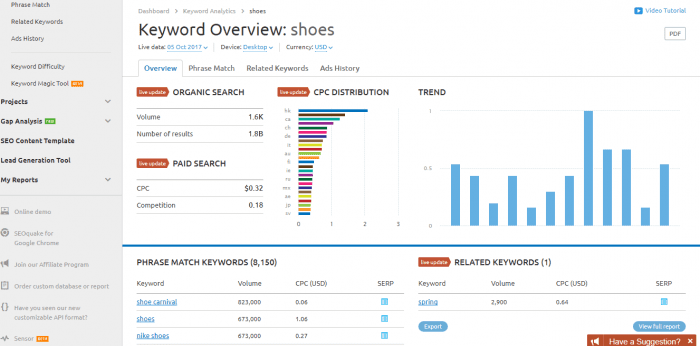
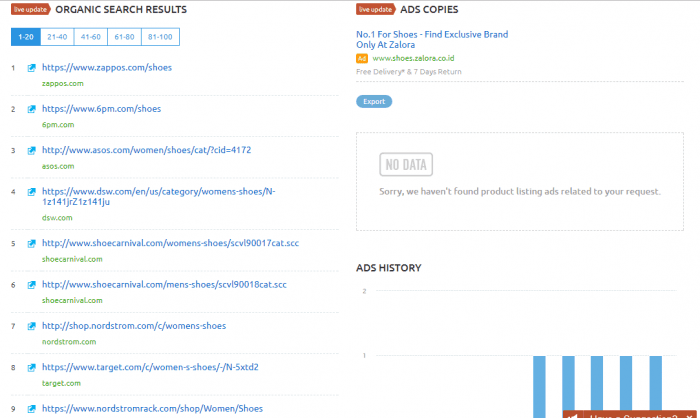
As you can see in both screenshots above, there is a lot of data, but what we want to look at now is the organic search results because it shows how much traffic it has created. In this part, you could also see the volume which tells you how many times the word was searched in a month and how many URLs competed for this word. But that’s not all, some other things you see here are the amount of paid searches and the number of competitors. Lastly, you also see 'Trend' in this part which tells you the volume of searches the keyword got in a month which can help you choose the best time to use the keyword.
Now, when you go to “Phrase Match Keywords Result”, view full report.
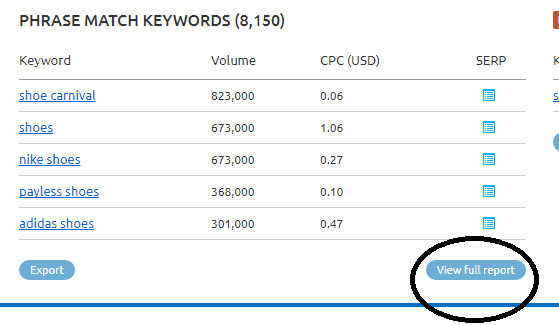
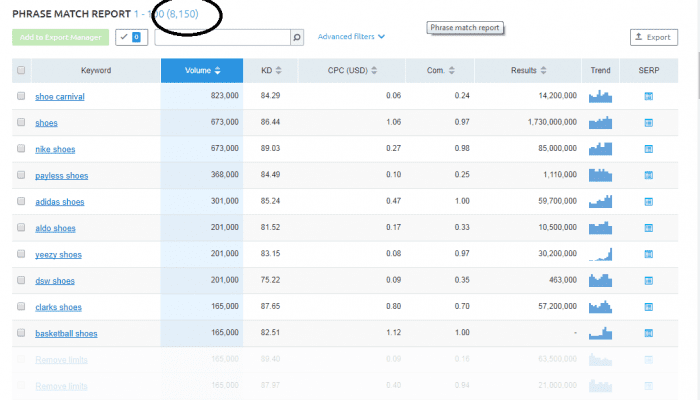
You can see more details that would be helpful when it comes to assessing a keyword. This way you can look at this data to decide whether it could help you rank higher or not.
This time let’s try related keyword search which could be found on the left part on the drop down of keyword analytics.
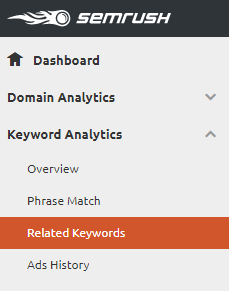
Here are words related to the keyword you typed in earlier.
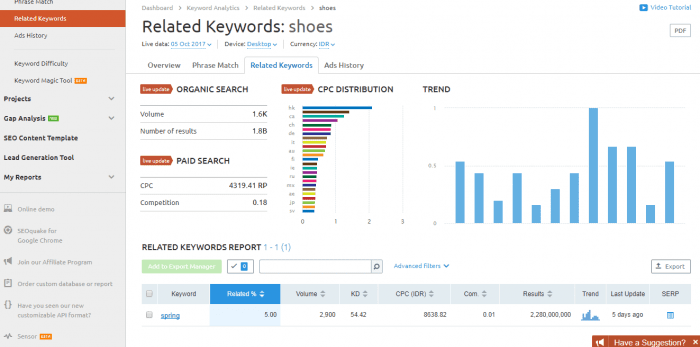
Just as its name says, it will show you other words that you can use together with the keyword you typed in or words that are just somehow related to it. If you are aiming to reach your content to more people or in a different niche this could be very helpful. This could help you create more content that still relates to your previous content. All you have to do is just repeat what you did earlier with all the other words you want to use.
Now let’s go to keyword difficulty. Are you planning to replace your competitor’s position in search? This tool could help you know how hard it would be to replace that competitor’s rank with that particular keyword. Just like in the image below, for the keyword shoes, it will be 62.19% difficult to replace its rank.

Know what keyword your competitor uses
Another thing everyone loves about SEMrush is its ability to show you what keyword your competitor uses and compare it to yours. All you have to do is search its domain and the results will come out. You can compare up to 5 different domains. Again, on the left side this time on the drop down of domain analytics you’ll see domain vs domain.
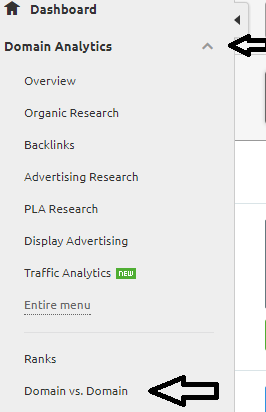
The picture below is a comparison of shoes.com and zappos.com, basically, we just compared two domains.

The moment you click 'go' you get all of this information.
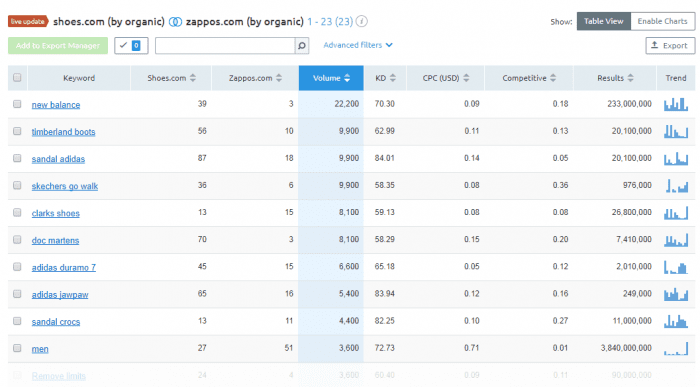
On table view, you get to see a lot of data like volume, KD, average CPC. But you could change that view into Enable chart and get a chart view.
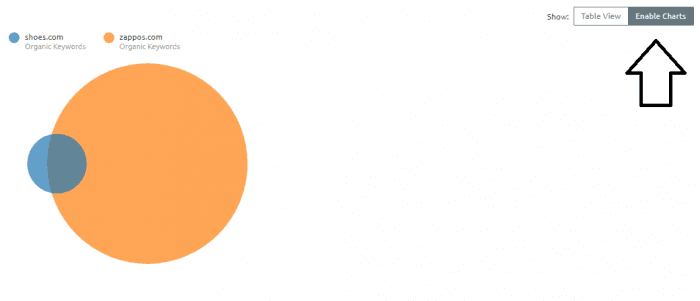
In chart view, you don’t really see numbers but you get a picture of how it actually looks.
2. Referral Marketing
Word of mouth is trusted more and more by people today, and that brings in the power of referral marketing. People would consider what their friends have experienced more than what they see in advertisements. With referral marketing, you make use of what you already have, your customers. It’s the most cost-effective way of marketing because you get to ask your customers to invite people they know in exchange for incentives when their friend purchases or sign up for your company. Sounds easy? It could be if it’s managed properly. What’s great about this type of marketing is that even if you're giving incentives it’ll always be because your customers have given you something more. When it comes to earning new customers, earning their trust is important.
You have the option to sign up for a 15 Days Free Trial, or pay monthly for different package options.
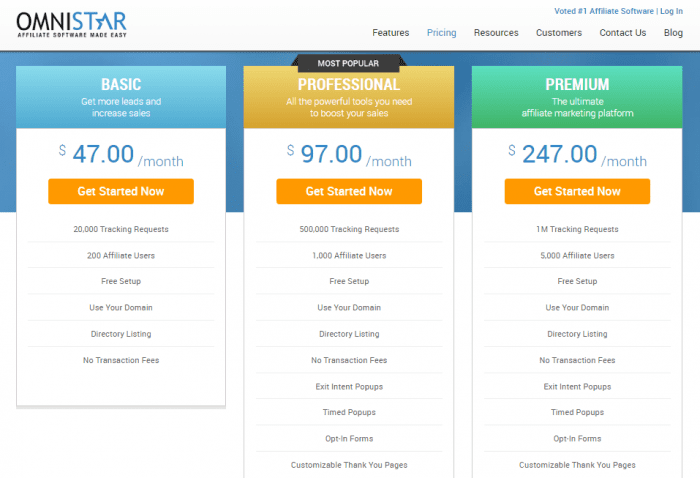
Let’s Get Started
First of all, welcome to Omnistar’s Dashboard. On the right, you’ll see Setup, user Dashboard, Campaigns, Users, Rewards, Reports, and Free one-on-one Help. But that’s not all, you also see the real-time statistics.
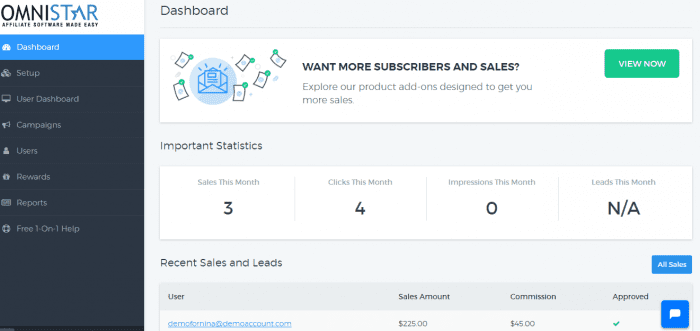
So, let’s start setting up your referral campaign. Simply click on Setup from the left side of your screen then Create/ Edit Referral Program.
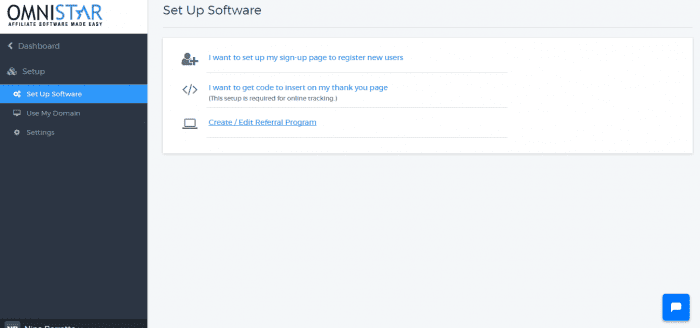
This time, Click on +Add to start creating your referral program.

On the next page you get to 'input a referral program name', a description, and choose the type of program; reward user with money, reward user with something other than money, only keep track of the leads they give you. Once you’ve filled it up just click on continue. When you reward users by money you have the ability to choose whether it be a flat rate or commission based and personalize the percentage.
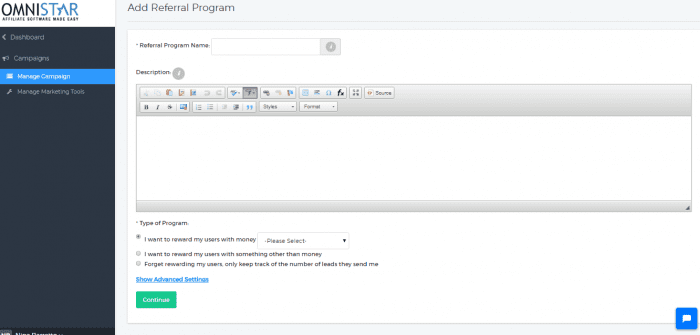
On the next step you get to choose what will happen when a referral’s link is clicked; send directly to your store, coupon with template, or coupon with an image. Then you can input the link to your store.

For this sample, I picked “Send directly to my store”, then typed in the link to a store and clicked finish.

So there, on the top right you could see that your referral program has been added successfully. Yes, it’s that easy to create a referral program with Omnistar.
3. Competitor Analysis
There are just two things you should do in the industry, be on top or catch up. So knowing what your competitor is doing is very important. But do you really know who your competitor in search are? Most of the time, it’s not just your same niche you’re in a battle with. That’s why you always have to know your competitor in SEO. Ahrefs can help you with that.
How to Competitor Analysis with Ahrefs
Start by typing your keyword into the search bar.

Once you’ve searched go down to SERP overview.
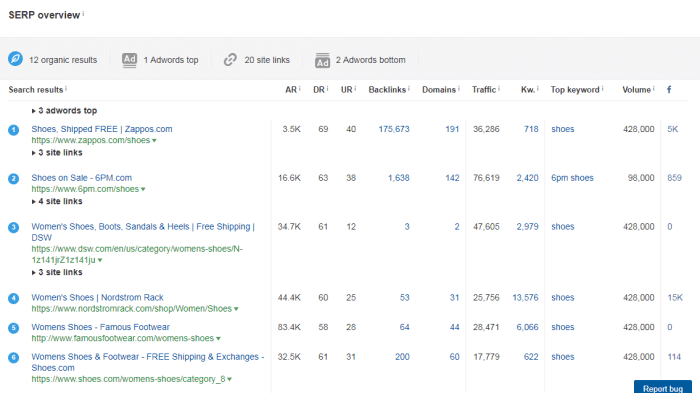
You'll find a lot of data here but focus on AR, an AE below 100k are more trusted by Google because they are mostly larger companies nationwide. Because they are trusted sites their rankings are dependant on their on-page factors.
Check how many backlinks your competitors are acquiring
Now you can also see how many backlinks a specific site is receiving.
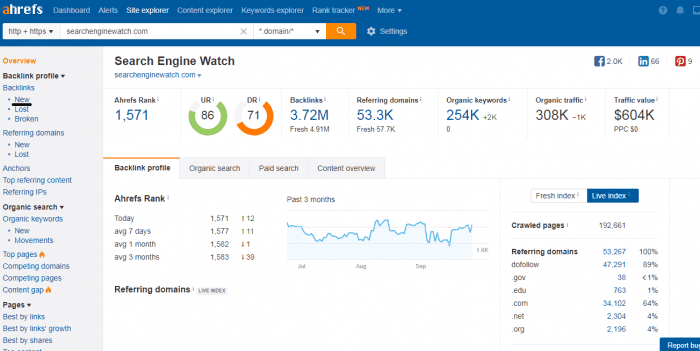
Just click on 'New' to see the newest data.
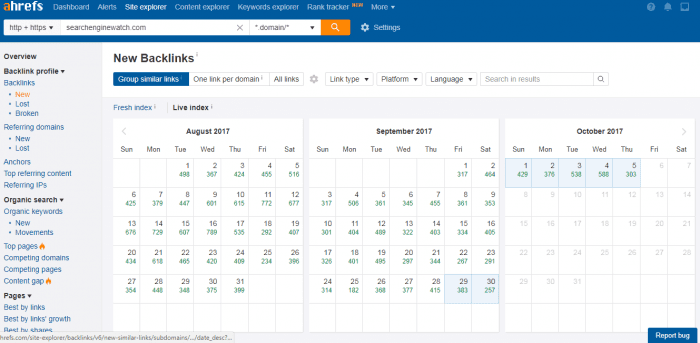
In the screenshot above you get to see the links they have in total, but let’s check how many they get per domain by clicking on one click per domain.
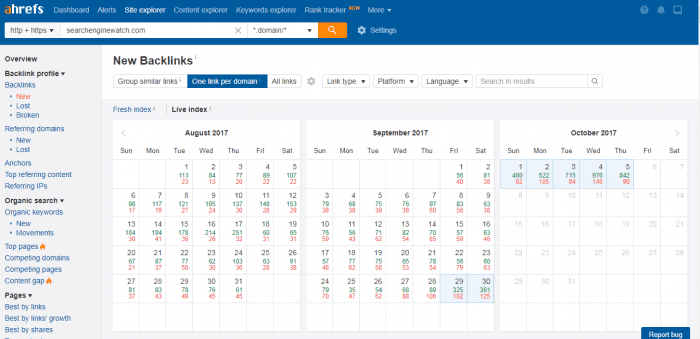
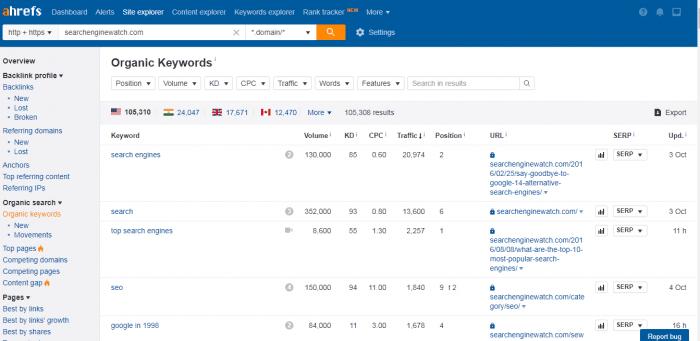
How to use MOZ for Keyword research
Just recently MOZ.com introduced a keyword research tool. Once you search for a keyword, you get all the results quickly.
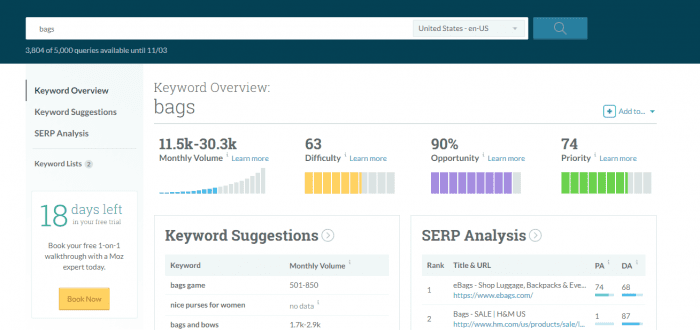
MOZ is very easy to use. With MOZ you have the ability to create a keyword listing (found on the left side of first MOZ image). You can access this even if you aren’t a premium member of MOZ, you can get 2 searches per day as a free member.
4. Go Viral to Grow More
I would definitely say that going viral is a very good technique to get incredible growth. But what makes ecommerce shops go viral? There are two factors, one is Freebies, and the second is shareability. Why freebies? First of all, who wouldn’t want freebies? No one, right? So if your shop has amazing freebies whether services or products, there’s a big chance it will go viral. But your freebies have to be something your customer would enjoy because if it isn't you’d just end up wasting inventory. Make it something viral worthy and catchy that other people would want it too.
Next, shareability. Now, the first thing to think about is why would people want to share what you have? This is when you really have to put in the effort, believing in your products isn’t enough. One way to do this is by giving incentives whenever they share. This isn’t always just for products, there are sites where they offer additional services like cloud space whenever you share their website and their friends sign up.
Conclusion
These marketing hacks we talked about all need effort and time, but all of them will give you positive results when done properly. Some of them could even go hand-in-hand in order to achieve the best results. Just a reminder, things online could spread easily; make sure that whenever you go viral it isn’t because of something negative but always because of something positive.




































